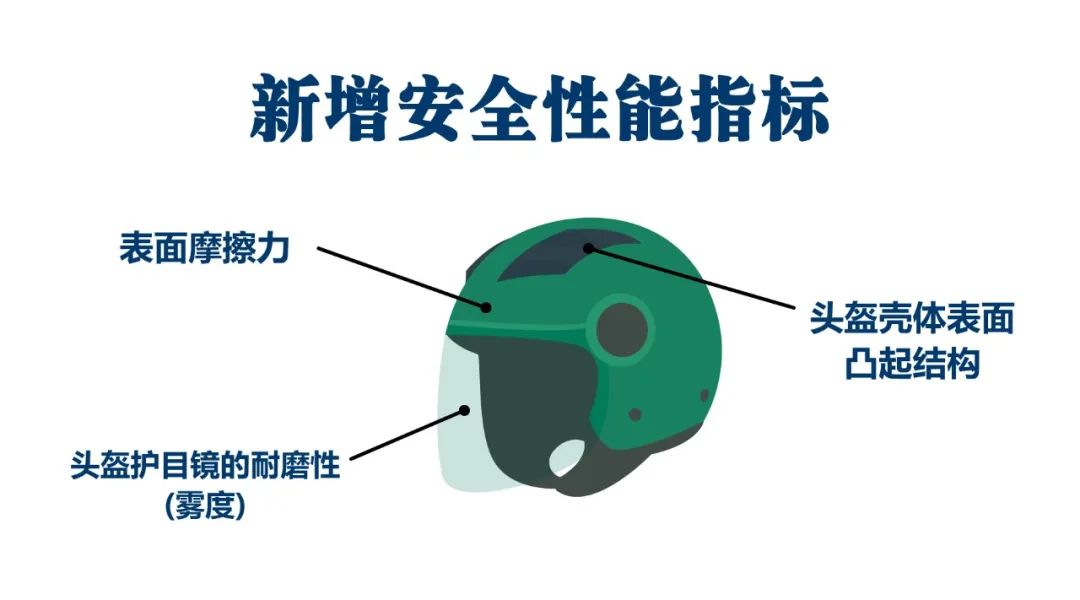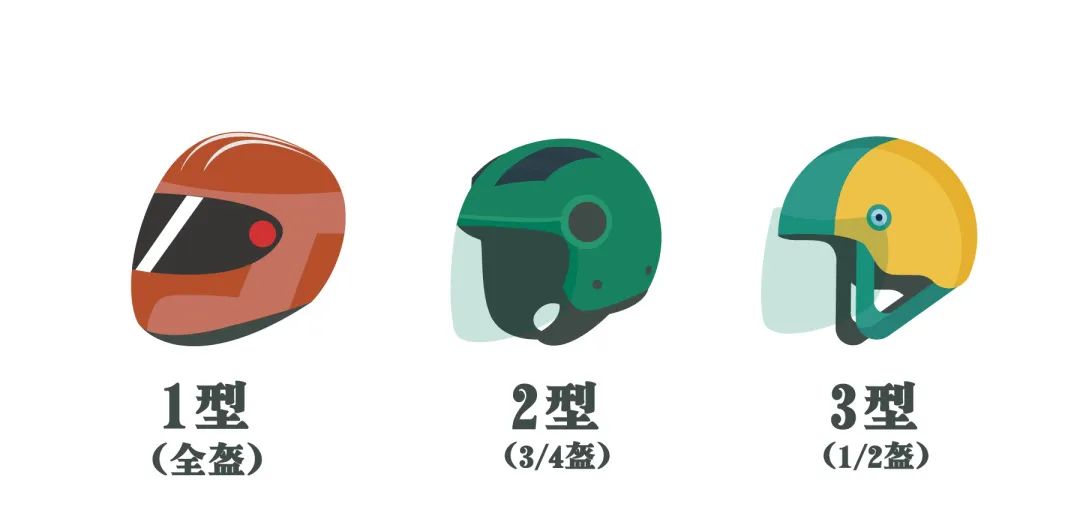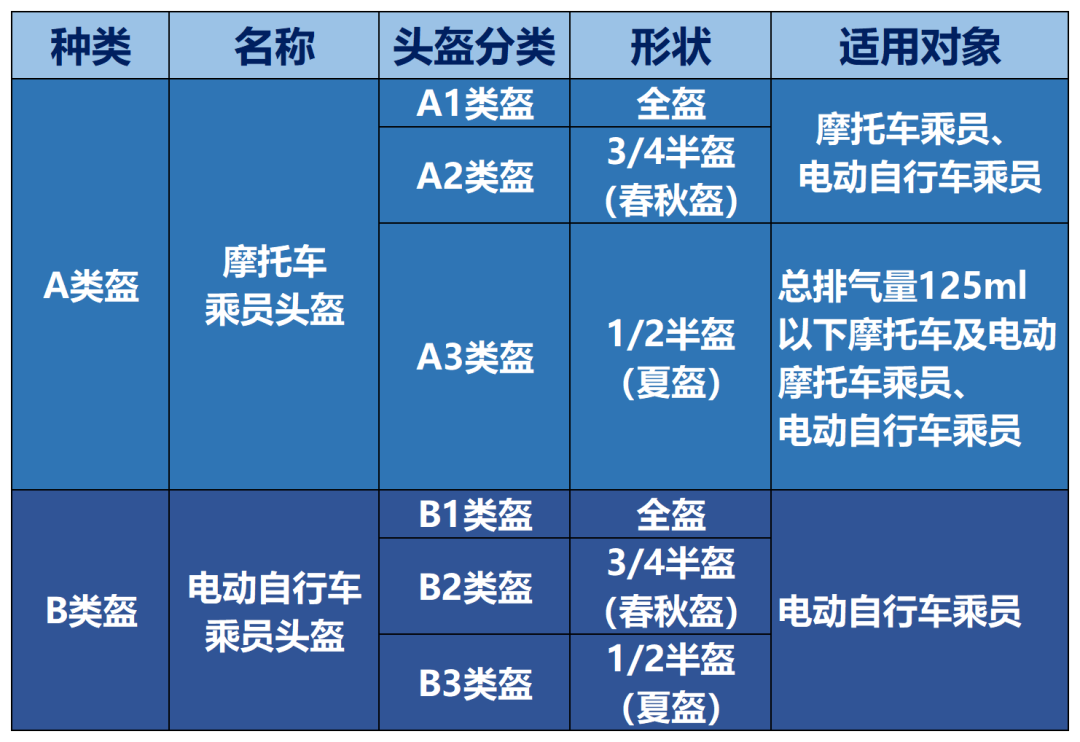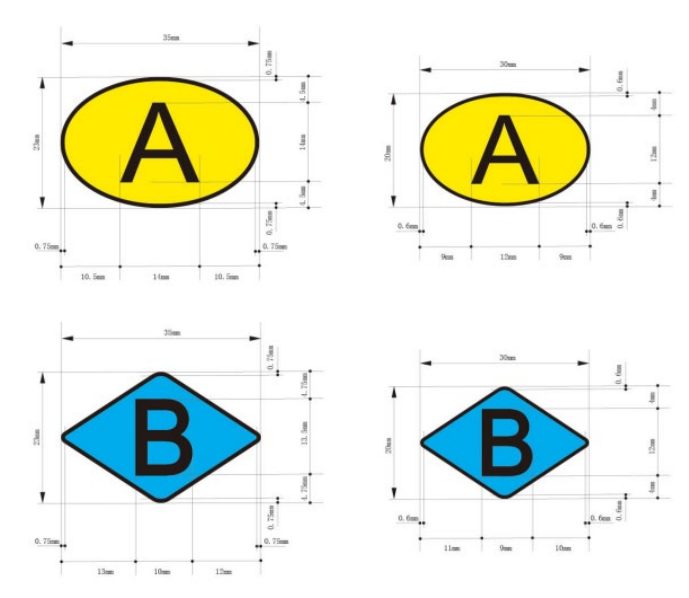On December 1, 2022, the State Administration of Market Supervision and the State Standardization Administration Committee issued the mandatory national standard GB 811-2022 "Helmets for Motorcycles and Electric Bicycles". The standard is formulated by the General Administration of Market Supervision in conjunction with the Ministry of Public Security and the Ministry of Industry and Information Technology, and organized by the National Technical Committee for Standardization of Road Traffic Management and relevant technical institutions. The new version of the national standard has been implemented since July 1, 2023, completely replacing GB 811-2010 Motorcycle Helmets.
The new standard stipulates the product classification, requirements, inspection rules, signs, logos, product instructions, packaging, transportation and storage of motorcycle and electric bicycle occupant helmets, and describes the test methods. This standard is applicable to helmets worn by drivers and riders of motorcycles and electric bicycles, but not to helmets worn by cyclists, skateboarders and roller skaters, nor to occupational safety helmets.
Main revised contents of the new national standard
1. Increase the number of passengers wearing helmets. The new national standard for helmets has revised the scope of application and added helmets worn by electric bicycle occupants (including drivers and riders).
2. Three safety performance indicators have been added. They are the wear resistance (haze) of helmet goggles, the convex structure on the surface of helmet shell and the surface friction.

(1) Wear resistance (haze) of helmet goggles. The new standard stipulates that the damage degree of goggles after the sand drop test cannot affect their normal use, and the haze value of lenses should not be greater than 10%.
(2) Shear force of the convex structure on the helmet surface. The new standard stipulates that the measured convex structure should be able to be cut and separated, or it will not prevent the cutter from slipping from the convex part. It mainly prevents the rider from rubbing on the ground when wearing a helmet with protrusions in the accident process, and the protrusions block the forward force of the wearer's head and cause secondary injury to the rider.
(3) Surface friction of helmet. The new standard stipulates that the carrier should not be stopped by friction. This index also simulates the resistance of the helmet when the rider is in an accident. The greater the friction, the greater the resistance and the more serious the damage to the rider.
3. The head size parameters used in the new standard are relatively more suitable for Asian head data. The head type is changed from four head types of big, medium, small and extra small in the old standard to five head types of A, E, J, M and O..
4. The types and shapes of helmets have been modified. In order to facilitate intuitive distinction, helmets are divided into Class A helmets and Class B helmets according to the applicable objects. Class A helmets are motorcycle riders' helmets, which are suitable for motorcycle riders and electric bicycle riders. Class B helmet is an electric bicycle occupant helmet, which is only applicable to electric bicycle occupants with a top speed of no more than 25 km/h. Helmets can be divided into 1 class helmet, 2 class helmet and 3 class helmet according to their shapes. Class 1 helmet is full helmet, class 2 helmet is 3/4 half helmet (spring and autumn helmet) and class 3 helmet is 1/2 half helmet (summer helmet).


5. The identification requirements have been revised. In order to clearly identify the helmets of motorcycle and electric bicycle occupants, and prevent motorcycle occupants from misusing the helmets of electric bicycle occupants, graphic signs restricting the use of motorcycle occupants are added to the helmets of B1, B2 and B3. The requirement that "the rear part of the outer surface of each helmet shell should have a logo for identifying the helmet type" is added, and the requirements of logo style, graphics and related performance are put forward in Appendix C "Helmet type logo". Motorcycle helmet logo is "yellow oval pattern+letter A", and electric bicycle helmet logo is "sky blue diamond pattern+letter B". Each type of logo has two sizes, large and small, to adapt to helmets with different specifications, shapes and designs.

The promulgation and implementation of the new standard not only makes up for the blank in the field of safety helmets for electric bicycles, but also promotes the healthy development of the helmet industry and ensures the safety of consumers.
Matters needing attention in purchasing helmets
When shopping, do it: "look, smell, press, wear and ask".
1. Look: See if the product has a standardized Chinese logo, including the standardized factory name and address, product name, implementation standards, conformity marks, etc., and whether the product has a foam buffer layer. Don't buy a helmet without a foam buffer layer. Don't buy a helmet without a factory name or a factory name that is not standardized, has no implementation standards and has no product certificate;
2. Smell: smell the helmet with your nose to see if it has a pungent smell, and choose products with no smell or less smell;
3. Press: Press the foam material buffer layer of the helmet slightly with your hands, and choose products with dense feel or slight rebound, no pit and no slag;
4. Wear: Try it on before buying, and choose a transparent lens that fits the head and is comfortable to wear, and the goggles have better light transmission (if equipped with goggles);
5. Q: The protective performance of different helmet types is different. At present, motorcycle helmets are all suitable for electric bicycle occupants. When buying motorcycle helmet products, you should buy products with 3C certification mark. After the implementation of the new national standard, Class B helmets are only suitable for electric bicycle occupants, and Class A helmets are suitable for both motorcycle occupants and electric bicycle occupants.
General knowledge of using/wearing helmets
1, wearing a helmet should fasten the tie.
2, after use, put it in a cool and ventilated place to avoid high temperature or long-term sunlight.
3. Helmets that have been cracked or slightly cracked due to collision during use can no longer be used.
4. The helmet will be exposed to the outdoor for a long time during use. Although it has not suffered from collision, it will age itself and some accessories after sun exposure and sweat erosion, thus reducing the safety factor and losing its protective performance.
5. Consumers are advised to replace helmets regularly according to their wear and use. If the helmet is impacted during use, its service life may be affected even if it is not damaged in appearance. It is recommended to replace it with a new helmet in time.
Warm tips
Product safety standards are becoming stricter. ZRLK suggests relevant enterprises to improve their risk awareness, test their products in time according to the new requirements, strictly control product quality, ensure products meet the requirements of relevant standards, and avoid random inspection risks. Our company has a professional technical team and rich experience in product testing, and can provide you with testing and certification services for related products. If you need it, please feel free to contact us, and our engineers will serve you at the first time!












